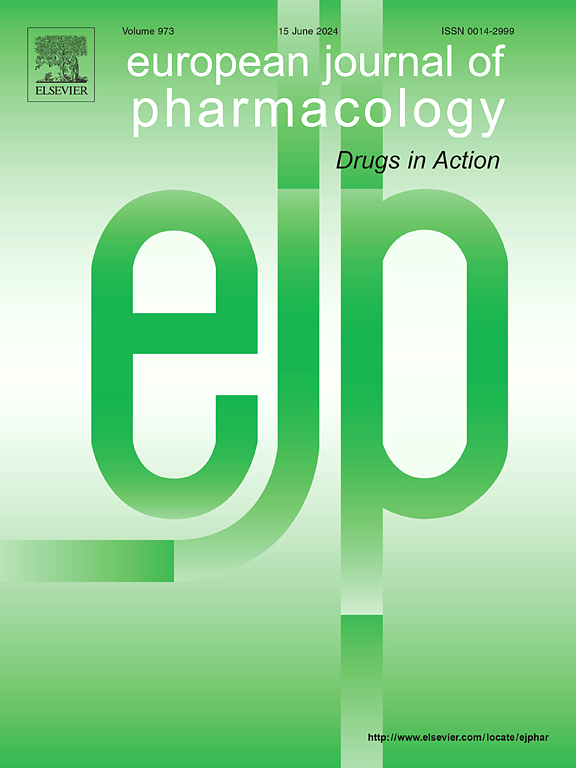丙戊酸钠可逆转兔急性心肌梗死的主动脉过度收缩。
IF 4.2
3区 医学
Q1 PHARMACOLOGY & PHARMACY
引用次数: 0
摘要
交感神经系统(SNS)、内皮素1 (ET-1)和血管紧张素II (Ang II)参与急性心肌梗死(AMI)的病理生理过程。丙戊酸(VPA)因其对心脏有益的作用而被研究用于治疗AMI。然而,VPA对AMI后SNS、ET-1和Ang II激活的血管效应研究尚不充分。在我们的研究中,我们使用无AMI、AMI和VPA (500 mg/kg/天)处理AMI的新西兰大白兔主动脉。阻断左旋冠状动脉1 h,再灌注诱发急性心肌梗死。5周后,我们在器官浴中研究离体血管反应性,并用Western blot检测蛋白表达。我们的研究结果表明,AMI增加了外源性和内源性NE和ET-1的血管收缩,而VPA可引起α2-肾上腺素能和ETB受体的上调以及ETA受体的下调,从而逆转这种收缩。虽然在AMI或vpa处理的家兔中血管对Ang II的反应没有变化,但在vpa处理的家兔中发现Ang II 2型受体表达增加。综上所述,VPA可通过调节主动脉SNS、ET-1和Ang II作为血管保护剂,再加上其对心脏的保护作用,使其有望成为治疗AMI的候选药物。本文章由计算机程序翻译,如有差异,请以英文原文为准。

Sodium valproate reverses aortic hypercontractility in acute myocardial infarction in rabbits
Sympathetic nervous system (SNS), endothelin 1 (ET-1) and angiotensin II (Ang II) are involved in the pathophysiology of acute myocardial infarction (AMI). Valproic acid (VPA) is under study for the treatment against AMI due to its beneficial cardiac effects. However, the vascular effects of VPA on the activation of the SNS, ET-1 and Ang II after AMI are not fully studied. In our study, we used aorta from New Zealand White rabbits without AMI, with AMI and AMI treated with VPA (500 mg/kg/day). AMI was induced by occluding the left circumflex coronary artery for 1 h, followed by reperfusion. After 5 weeks, we studied the ex vivo vascular reactivity in organ bath and measured protein expression by Western blot. Our findings indicated that AMI increased vasoconstriction to exogenous and endogenous NE and ET-1, which was reversed by VPA eliciting upregulation of α2-adrenergic and ETB receptors and downregulating ETA receptors. Although no changes in the vascular response to Ang II were observed in AMI or VPA-treated rabbits, an increase in Ang II type 2 receptor expression was found in VPA-treated rabbits. We conclude that VPA could be considered a vascular protector by modulating SNS, ET-1 and Ang II in the aorta, which together with its cardioprotective effect would make it a promising candidate for the treatment of AMI.
求助全文
通过发布文献求助,成功后即可免费获取论文全文。
去求助
来源期刊
CiteScore
9.00
自引率
0.00%
发文量
572
审稿时长
34 days
期刊介绍:
The European Journal of Pharmacology publishes research papers covering all aspects of experimental pharmacology with focus on the mechanism of action of structurally identified compounds affecting biological systems.
The scope includes:
Behavioural pharmacology
Neuropharmacology and analgesia
Cardiovascular pharmacology
Pulmonary, gastrointestinal and urogenital pharmacology
Endocrine pharmacology
Immunopharmacology and inflammation
Molecular and cellular pharmacology
Regenerative pharmacology
Biologicals and biotherapeutics
Translational pharmacology
Nutriceutical pharmacology.

 求助内容:
求助内容: 应助结果提醒方式:
应助结果提醒方式:


